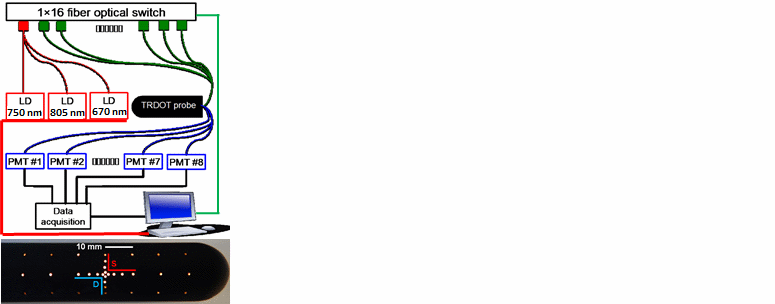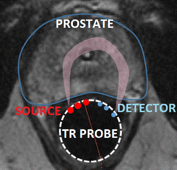
Prostate focal therapy is a potential alternative to radical therapies such as prostatectomy, and radiation therapy that carry significant risk of complications. The treatment goal is to completely destroy the targeted lesion while avoiding damage to the rectal wall. MRI thermometry is commonly used to monitor ablation treatments, assuming that tissue temperatures of approximately 55-60°C are sufficient for thermal coagulation of the target. However, MRI thermometry does not directly measure treatment-induced tissue changes and its expense limits patient access to focal therapy. As an alternative monitoring technique, trans-rectal diffuse optical tomography (TRDOT) measures changes in tissue optical properties that are representative of thermal coagulation, in particular large increases in optical scattering. TRDOT generates 3D maps of optical absorption and scattering using multiple light sources and detectors in contact with the tissue and applying models of light propagation to reconstruct the optical images. We report on the assembly and initial testing of a TRDOT system, including an MRI compatible probe with 32 channels for light delivery and detection. The system is designed to monitor interstitial photothermal treatments of tumors close to the rectal wall to prevent treatments progressing into the rectum. On ex vivo samples, TRDOT accurately mapped the size of a treatment-induced lesion during the full course of treatment. Clinical feasibility studies demonstrate that the system can be used in a patient for monitoring focal PTT in the prostate.

